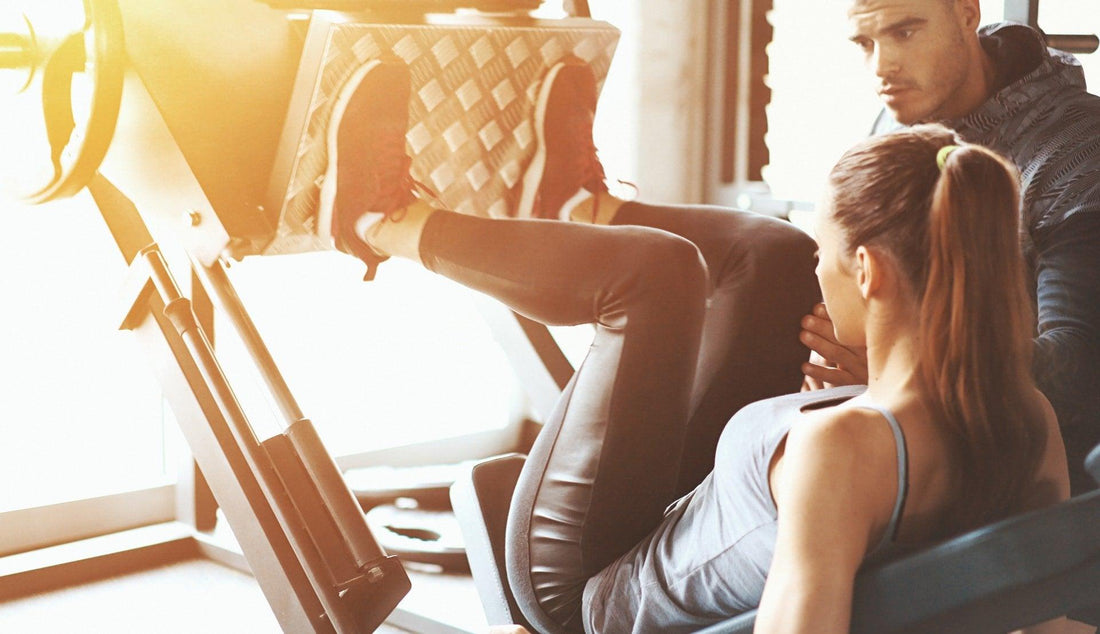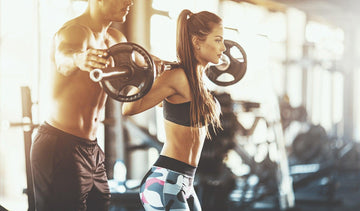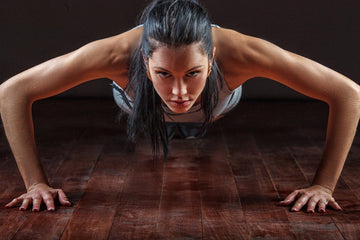

What is the Best Exercise for Legs? Build your Legs... Backed by Science
Table of Contents
In the world of exercise physiology, if a scientist wants to measure the how much a muscle is contracting, they will use what’s called EMG. An electromyogram (EMG) measures the electrical activity of muscles at rest and during contraction. Nerve conduction studies measure how well and how fast the nerves can send electrical signals. If you look at the example below, the harder the subject contracts his muscle, the larger the increase in EMG activity.
When you are training your legs, you have a limited amount of time in the gym to stimulate the chest muscle fibers, so you want to choose the exercises that activate the most muscle fibers. One of the beauties of EMG is that there are probably over 30 different exercises for the chest, so why waste time on the activities that don’t fully activate the chest fibers the most. In the book, Serious Strength Training by Dr. Tudor Bompa, which should be in all serious bodybuilders book collection. The results of the best leg exercises based on EMG
Rectus femoris (quads)
Safety squats (90-degree angle, shoulder width stance) —-88%
seated leg extensions (toes straight) ——-86%
Hack squats (90-degree angle, shoulder width stance) —-78%
Leg press (110-degree angle) —————-76%
Smith machine (90-degree angle, shoulder width stance) —-60%
Biceps femoris (hamstring)
Standing leg curls ————————–82%%
Lying leg curls —————————–71%
Seated leg curls —————————-58%
Modified hamstring deads ——————–56%
Semitendinosus (inner hamstring)
Seated leg curls —————————-88%
Standing leg curls ————————–79%
Lying leg curls —————————–70%
Modified hamstring deads ——————–63%
Most people that go to the gym are either going to maintain a healthy lifestyle or are involved in some sport trying to get performance enhancement from strength gains. Many people going to the gym will choose the leg press over the barbell squat. Many gym novice clients may feel that the squat is dangerous but most of all, the squat is much more physically demanding than the leg press. The leg-press requires less balancing the of the weight. Therefore, less muscle activity contributes toward stabilization compared to the squat. The leg press also allows a lifter to exert more force to be applied in the linear path. Many people like to load up the leg press machine as you commonly see in the gym.
Although the squat and the leg press both work the leg muscles, squat and leg-press exercises are distinctly different and produce different specific neuromuscular adaptations because of various movement patterns. Researchers wanted to examine if the squat and leg press could enhance physical performance. 78 students participated in this study (39 in the training group and 39 as controls). Both groups were divided into two subgroups. The participants were mostly athletes of track and field sports, soccer, hockey or basketball.
The first training group (squat training group) completed an 8-week strength training protocol using the parallel squat.
The 2nd training group (leg-press training group) used the same training protocol using the leg-press (45
Training was conducted twice per week for eight weeks. The training groups performed five sets of their 8-10-repetition maximum (RM) during the first three weeks. The subjects completed each set to momentary muscular failure in the last two repetitions of the targeted repetitions scheme (forced reps). Both the squat and leg press group performed the same periodized program using the same relative intensity and volume. Before and after the training program, the athletes were tested for 1RM, squat jump, countermovement jump and drop jump.
At the end of the study, the squat increased performance in the squat jump, countermovement jump and drop jump more effectively compared to the leg press in short-term strength training. The squat training group exhibited statistically significant enhancements in squat jump (12.4%) and countermovement jump (12.0%). Contrary to the squat training group, no changes were observed in the leg press group. Overall, the group comparisons show, that the squat was superior to leg press for improving athletic performance. Overall, these findings suggest that increases in squat strength provide transfer to markers of athletic performance whereas increases in leg press strength offered no meaningful benefit in these parameters.
Altering foot stance is often prescribed as a method of isolating muscles during the parallel squat. If you want big quads, you need to squat with a narrow stance. Lifters have all heard this for years, but researchers wanted to put the foot position theory to the test. Researchers compared activity in six muscles when the parallel squat is performed with different stances (narrow, wide, and shoulder width apart) and bar loads (60 and 75% of a 1-RM). Nine male lifters served as subjects and the researchers attached electrodes all over the lifters leg’s to measure muscle activation during different leg stance. Subject’s completed five nonconsecutive reps of the squat using:
-Shoulder width stance
– Narrow stance (75% shoulder width)
-Wide stance(140% shoulder width) stances with low and high loads (60% and 75% 1RM, respectively).
Although Tom Platz used a narrow stance during squats, current research suggests that foot position is not going to alter quad activation. At the end of the study, the researchers found that for the quadriceps muscle, foot position made no difference in the quadriceps. Additionally, it made no difference for the vastus medialis either. So the researchers’ found that the foot position made no difference in quadriceps activation, but foot position did affect hamstring and glutes activation. The results suggest that stance width does not cause isolation within the quadriceps but does influence muscle activity on the hamstrings and buttocks. A similar study was conducted in 2009 and found similar findings. Researchers measured the EMG of 8 different thigh muscles while performing 3 x 10 repetition squats at three different stance widths, with three different bar loads (no load, 30%RM and 70%RM). Results showed a significant difference only in the gluteus maximus, whereby the electrical signal was at its highest during the widest squat and heaviest load. So altering you foot position from narrow to wide is not going to affect your quads, but a wide grip stance will activate more of your glutes and hamstrings. Wider stances activate more muscles. Women looking to get better glut development should squat with a wide stance as opposed to a narrow stance. The glutes are a tremendous developer of power and strength, so if you have the capability to utilize their strength in a movement, you should do so. Wide stance squats activate a total muscle groups, so if you’re looking for complete leg development, a wide stance is the way to stand.
McCaw ST, Melrose DR. Stance width and bar load effects on leg muscle activity during the parallel squat. Med Sci Sports Exerc. 1999 Mar;31(3):428-36.
Paoli, A, Marcolin, G, and Petrone, N. The effect of stance width on the electromyographical activity of eight superficial thigh muscles during back squat with different bar loads. J Strength Cond Res 23: 246–250, 2009.
Wirth K, Hartmann H, Sander A, Mickel C, Szilvas E, Keiner M. The impact of back squat and leg-press exercises on maximal strength and speed-strength parameters. J Strength Cond Res. 2015 Sep 25.

















